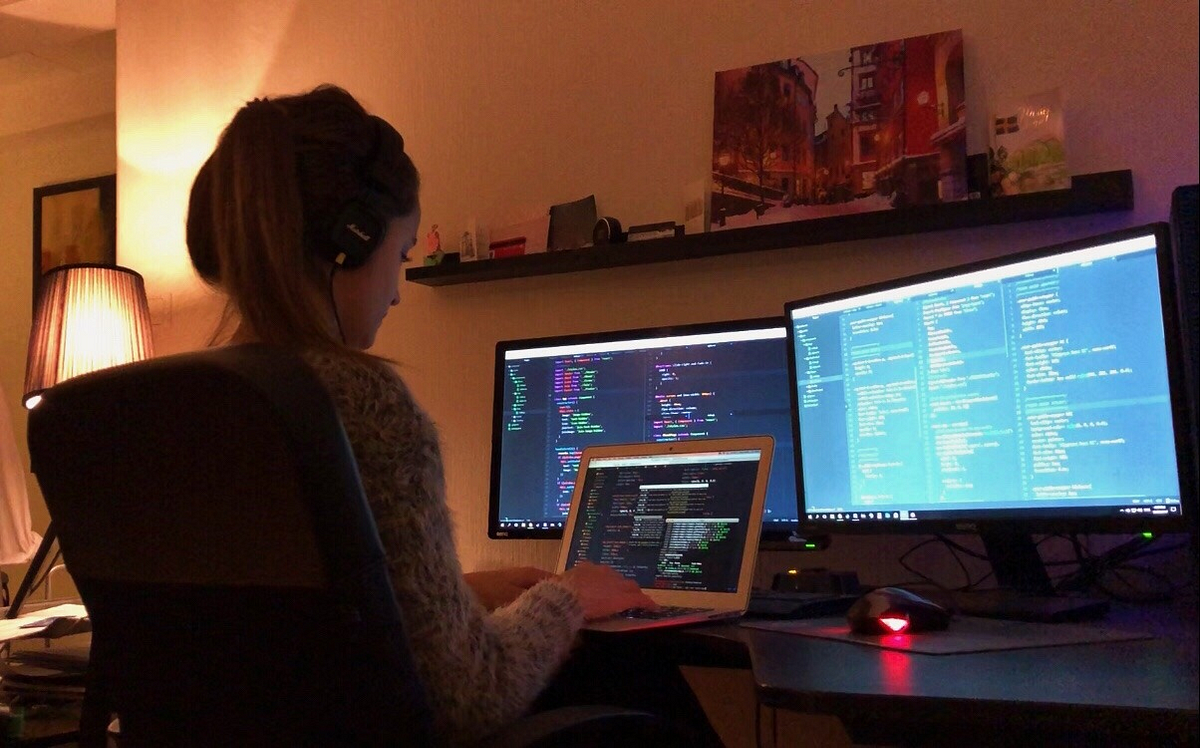Why Picking the Right Software Development Partner Can Transform Your Project
Why Picking the Right Software Development Partner Can Transform Your Project
Blog Article
Committed Developers vs. In-House Teams: Which Is Right for You?
The decision between using dedicated designers and maintaining an in-house team is a substantial one that can affect the trajectory of your tasks and overall service method. Conversely, internal teams contribute to a cohesive firm culture and a nuanced understanding of long-term goals.
Recognizing Dedicated Developers
The expanding need for specialized skills in the technology sector has actually brought about the emergence of specialized programmers as a feasible service for numerous companies. These professionals are normally contracted on a job basis, permitting business to leverage specific expertise without the lasting commitment associated with permanent hires. Devoted designers are often embedded within a customer's group, supplying versatility and scalability to satisfy project requirements.
This version permits companies to access a worldwide ability pool, which is particularly helpful in a rapidly progressing technological landscape. Dedicated developers can be sourced from different geographical areas, making certain that business can find the best capability at affordable rates. They typically bring a riches of experience and expertise, having dealt with diverse jobs across various sectors.
Additionally, dedicated programmers can focus solely on the jobs handy, enhancing efficiency and effectiveness. They are equipped to incorporate flawlessly into existing process, collaborating closely with internal teams to attain task purposes. This strategy not only reduces the worry of employment and training but likewise enables companies to continue to be active, adapting quickly to transforming market needs and technological innovations.
Advantages of In-House Teams

In addition, internal teams often tend to have a much deeper understanding of the firm's mission, values, and goals. This positioning can improve employee engagement and motivation, as employee really feel much more connected to their job and the company's success. Additionally, having a specialized in-house team enables much better placement of purposes and techniques, as these participants are constantly focused on the business's concerns.
In-house groups also assist in quicker decision-making processes, as they can react more swiftly to modifications and challenges. The well-known connections and experience with company procedures permit structured operations and minimized miscommunication. Ultimately, the combination of a natural culture, alignment with organizational goals, and reliable interaction makes internal teams a beneficial asset for lots of companies, specifically those wanting to cultivate long-term growth and technology.
Price Considerations
When assessing cost considerations, both specialized designers and internal teams existing unique monetary effects for companies. Involving dedicated developers normally entails a pay-per-project or per hour price design, which can be economical for businesses with varying job needs. This approach enables adaptability in scaling sources up or down, making certain that business only pay for the solutions they need.
In comparison, internal groups entail fixed costs, consisting of wages, benefits, and overhead costs such as workplace area and devices. While this model provides higher control and immediate schedule of sources, it might result in greater long-lasting expenses, specifically if the work does not validate a full time staff.
Additionally, business must consider the covert expenses connected with recruitment and training of internal employees, which can further stress spending plans. Sometimes, the time and sources invested on taking care find this of an in-house group can take web design away from the company's core service goals.

Task Monitoring and Adaptability
Job monitoring and adaptability are essential factors that influence the option in between internal teams and dedicated designers. Dedicated designers usually offer a high degree of versatility, allowing organizations to scale sources up or down based upon job needs. This agility can be specifically useful for companies experiencing changing workloads or those seeking to innovate rapidly. Devoted teams usually have actually established procedures for handling projects efficiently, leveraging specific methods like Agile or Scrum, which promote iterative development and versatility.

Eventually, the option between dedicated programmers and in-house groups depends upon the desired degree of versatility and the details project monitoring needs. Firms have to examine their functional dynamics, job intricacy, and resource schedule to determine which alternative aligns best with their tactical purposes.
Making the Right Selection
Choosing the best development approach-- in-house teams or specialized programmers-- needs a view publisher site cautious assessment of numerous factors that straighten with a company's tactical goals. Alternatively, internal teams can give far better continuity and combination with existing workers.
Next, evaluate your spending plan. Dedicated developers frequently offer an affordable option for temporary tasks, while in-house teams may incur higher lasting costs as a result of wages, advantages, and overhead costs. Analyze the degree of control and collaboration wanted; internal groups typically foster stronger interaction and placement with business culture.
If immediate outcomes are necessary, committed designers can be onboarded quickly, whereas developing an internal team takes time for employment and training. If constant advancement is crucial, investing in an in-house team may generate far better returns over time.
Conclusion
In verdict, the decision between committed programmers and internal groups hinges on project needs and business goals. Conversely, in-house teams cultivate a cohesive society and much deeper alignment with long-lasting objectives.
The decision in between using devoted developers and maintaining an internal team is a substantial one that can influence the trajectory of your tasks and total business technique.Project management and flexibility are critical variables that influence the option in between internal teams and specialized programmers. software development partner.In contrast, in-house teams may succeed in preserving a constant project management structure due to their experience with the company's culture and long-term goals. Committed designers frequently present an affordable option for short-term jobs, while internal groups may sustain higher long-term expenditures due to wages, advantages, and overhead costs.In final thought, the decision in between internal teams and dedicated programmers pivots on job needs and organizational purposes
Report this page